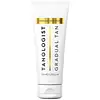What's inside
What's inside
 Key Ingredients
Key Ingredients

 Benefits
Benefits

 Concerns
Concerns

 Ingredients Side-by-side
Ingredients Side-by-side

Water
Skin ConditioningIsopropyl Palmitate
EmollientDihydroxyacetone
Skin ConditioningCoco-Caprylate/Caprate
EmollientGlyceryl Stearate
EmollientPolyacrylamide
Sodium Hyaluronate
HumectantSodium Ascorbyl Phosphate
AntioxidantTocopheryl Acetate
AntioxidantAloe Barbadensis Leaf Juice Powder
Skin ConditioningErythrulose
TanningC13-14 Isoparaffin
EmollientDimethyl Isosorbide
SolventLaureth-7
EmulsifyingPotassium Cetyl Phosphate
EmulsifyingCitric Acid
BufferingIsobutyl Acetate
PerfumingPhenoxyethanol
PreservativeBenzyl Alcohol
PerfumingWater, Isopropyl Palmitate, Dihydroxyacetone, Coco-Caprylate/Caprate, Glyceryl Stearate, Polyacrylamide, Sodium Hyaluronate, Sodium Ascorbyl Phosphate, Tocopheryl Acetate, Aloe Barbadensis Leaf Juice Powder, Erythrulose, C13-14 Isoparaffin, Dimethyl Isosorbide, Laureth-7, Potassium Cetyl Phosphate, Citric Acid, Isobutyl Acetate, Phenoxyethanol, Benzyl Alcohol
Water
Skin ConditioningCaprylic/Capric Triglyceride
MaskingC12-15 Alkyl Benzoate
AntimicrobialPropylene Glycol
HumectantDihydroxyacetone
Skin ConditioningGlyceryl Stearate
EmollientPEG-100 Stearate
Cetearyl Alcohol
EmollientDimethicone
EmollientXanthan Gum
EmulsifyingTocopheryl Acetate
AntioxidantCommiphora Mukul Resin Extract
Skin ConditioningColeus Forskohlii Root Extract
EmollientAloe Barbadensis Extract
Skin ConditioningPanthenol
Skin ConditioningAscorbic Acid
AntioxidantCalendula Officinalis Flower Oil
MaskingCitrus Paradisi Fruit Extract
Skin ConditioningJuniperus Communis Fruit Oil
MaskingLycium Barbarum Fruit Extract
AstringentPunica Granatum Extract
AstringentErythrulose
TanningDipropylene Glycol
HumectantCaramel
Cosmetic ColorantParfum
MaskingHexyl Cinnamal
PerfumingLimonene
PerfumingLinalool
PerfumingGeraniol
PerfumingHydroxycitronellal
PerfumingBenzophenone-3
UV AbsorberBenzophenone-4
UV AbsorberTetrasodium EDTA
Benzoic Acid
MaskingDehydroacetic Acid
PreservativeCitric Acid
BufferingPhenoxyethanol
PreservativeWater, Caprylic/Capric Triglyceride, C12-15 Alkyl Benzoate, Propylene Glycol, Dihydroxyacetone, Glyceryl Stearate, PEG-100 Stearate, Cetearyl Alcohol, Dimethicone, Xanthan Gum, Tocopheryl Acetate, Commiphora Mukul Resin Extract, Coleus Forskohlii Root Extract, Aloe Barbadensis Extract, Panthenol, Ascorbic Acid, Calendula Officinalis Flower Oil, Citrus Paradisi Fruit Extract, Juniperus Communis Fruit Oil, Lycium Barbarum Fruit Extract, Punica Granatum Extract, Erythrulose, Dipropylene Glycol, Caramel, Parfum, Hexyl Cinnamal, Limonene, Linalool, Geraniol, Hydroxycitronellal, Benzophenone-3, Benzophenone-4, Tetrasodium EDTA, Benzoic Acid, Dehydroacetic Acid, Citric Acid, Phenoxyethanol
 Reviews
Reviews

Ingredients Explained
These ingredients are found in both products.
Ingredients higher up in an ingredient list are typically present in a larger amount.
Citric Acid is an alpha hydroxy acid (AHA) naturally found in citrus fruits like oranges, lemons, and limes.
Like other AHAs, citric acid can exfoliate skin by breaking down the bonds that hold dead skin cells together. This helps reveal smoother and brighter skin underneath.
However, this exfoliating effect only happens at high concentrations (20%) which can be hard to find in cosmetic products.
Due to this, citric acid is usually included in small amounts as a pH adjuster. This helps keep products slightly more acidic and compatible with skin's natural pH.
In skincare formulas, citric acid can:
While it can provide some skin benefits, research shows lactic acid and glycolic acid are generally more effective and less irritating exfoliants.
Most citric acid used in skincare today is made by fermenting sugars (usually from molasses). This synthetic version is identical to the natural citrus form but easier to stabilize and use in formulations.
Read more about some other popular AHA's here:
Learn more about Citric AcidDihydroxyacetone, or DHA, is a simple sugar. It is frequently used in self-tanning products.
DHA binds to the amino acids in your dead skin cells to create a brown/orange color. Darkening begins to kick in a few hours after application and will continue to develop for up to 3 days. This ingredient can be drying.
Both the US and the EU have approved DHA in self-tanning products. In the EU, DHA is allowed at a maximum concentration of 10%. Most tanning products usually contain amounts between 3-5%.
If you are pregnant or have underlying medical conditions, it is best to speak with a dermatologist about using self-tanning products.
Learn more about DihydroxyacetoneWe don't have a description for Erythrulose yet.
Glyceryl Stearate is a mix of glycerin and stearic acid.
It is used to stabilize the mixing of water and oil ingredients. By preventing these ingredients from separating, it can help elongate shelf life. It can also help thicken the product's texture.
As an emollient, it helps soften skin and supports barrier-replenishing ingredients.
In cosmetics, Glyceryl Stearate is often made from vegetable oils or synthetically produced.
This ingredient may not be fungal-acne safe
Fun fact: The human body also creates Glyceryl Stearate naturally.
Learn more about Glyceryl StearatePhenoxyethanol is a preservative that has germicide, antimicrobial, and aromatic properties. Studies show that phenoxyethanol can prevent microbial growth. By itself, it has a scent that is similar to that of a rose.
It's often used in formulations along with Caprylyl Glycol to preserve the shelf life of products.
Tocopheryl Acetate is AKA Vitamin E. It is an antioxidant and protects your skin from free radicals. Free radicals damage the skin by breaking down collagen.
One study found using Tocopheryl Acetate with Vitamin C decreased the number of sunburned cells.
Tocopheryl Acetate is commonly found in both skincare and dietary supplements.
Learn more about Tocopheryl AcetateWater. It's the most common cosmetic ingredient of all. You'll usually see it at the top of ingredient lists, meaning that it makes up the largest part of the product.
So why is it so popular? Water most often acts as a solvent - this means that it helps dissolve other ingredients into the formulation.
You'll also recognize water as that liquid we all need to stay alive. If you see this, drink a glass of water. Stay hydrated!
Learn more about Water